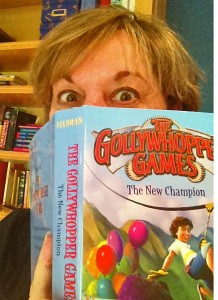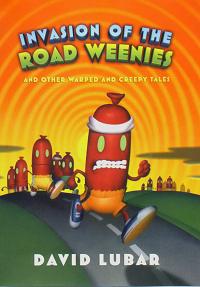Good morning! We’ve been writing together four weeks now, and maybe you’re looking back at some of your earlier pieces, thinking, “You know…I’d like to work on that some more.” Today’s Thursday Quick-Write is about revision, and it’s courtesy of guest author Kim Norman.
Kim has ten picture books in print, include TEN ON THE SLED, I KNOW A WEE PIGGY, and CROCODADDY. In addition to writing, she maintains a website listing authors who visit schools, “Author School Visits by State.”


REVVED UP REVISION
As a picture book writer, I have to make every word count. Sometimes it comes down to cutting individual words, one at a time, until the manuscript is as tight as New Year’s Spanx. One way to eliminate extra words is to give my verbs multiple tasks. Choosing strong, specific verbs means I don’t have to prop them up with manuscript-bloating adverbs.
Actually, “choosing” isn’t the right word, because that implies I choose perfect verbs for my first draft. I don’t. Any verb will do in a first draft, as long as I get the story down. But as I begin the revision process, one of the first things I look at is the verbs in my sentences. During school visits, I tell students, “I think of a verb as the engine of the sentence.” Like a powerful engine, a strong verb will take you a lot farther a lot faster. On that first revision, I’m looking for “hot rod” verbs to rev up my story.
To illustrate the power of hot rod verbs, I share a passage of text from Toni Buzzeo’s book, DAWDLE DUCKLING. (Used with Toni’s permission, of course!) The first line of Toni’s passage reads, “Past the marsh with cattails waving.” On the first PowerPoint slide, I offer a slight variation. I have replaced Toni’s hot rod verb with a bland, first-drafty sort of verb: “Past the marsh with cattails growing.” There’s nothing much happening with the word “growing.” And it’s a very poor word to ask an illustrator to show. You cannot SEE a plant growing. On the next slide, I have students choose from a list of alternative verbs: waving, blowing, nodding or whipping. I call on someone to choose one.
Regardless of which verb the student chooses, it’s already a better sentence, because each of those alternative verbs is capable of double-duty. Not only does “whipping” (for instance) add movement to the image–giving your illustrator something more dynamic to show–it also gives us a clue about the WEATHER. By changing ONE WORD we now know more about our setting.
In the second line, (where I have replaced Toni’s hot rod verb “paddles” with the less specific “swims”), students choose from this list of verbs: paddles, floats, glides, drifts or thrashes. If a student chooses “glides,” I ask: “When Mama Duck was ‘swimming,’ did we know how she was FEELING?” Nope. “But if Mama Duck is GLIDING… she’s just GLI-I-I-DING (I’m comically acting this out) how is she feeling?” Students realize that again, by swapping one verb for another, we have now given more information about Mama Duck’s calm state of mine. If “thrashing” was the chosen word, students comment that she is perhaps frightened by an approaching bear.
So today, I’ll ask you to choose a passage of text from your own work. Take a look at your verbs and see if you can select stronger words capable of double-duty. Do you have a character “walking slowly?” Search for a word that not only allows you to strike out that extraneous adverb “slowly;” see if, instead, you can rev the engine of the sentence to hot rod status by choosing a single verb that tells us your character’s state of mind as he wanders/stomps/rambles. In other sections, tell us more about setting with double-duty verbs in descriptive sentences.
If you need inspiration, think of my husband’s 1970 Chevelle.
It’s noisy, but man, it’ll get you there FAST. The nice thing about revving up your writing? No worries about speeding tickets!
Note from Kate: If you’d like, share a bit of your revised text in the comments!

















